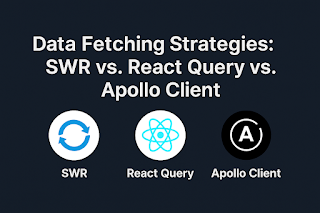Introduction to Infrastructure as Code (IaC) for Front-End Devs
In the fast-paced world of front-end development, the focus is often on building sleek interfaces, optimizing performance, and managing state. However, as applications grow, so do the demands of deployment, scalability, and consistency across environments. That’s where Infrastructure as Code (IaC) comes into play.
But wait—why should a front-end developer care about infrastructure?
Let’s break it down.
What is Infrastructure as Code (IaC)?
IaC is the practice of managing and provisioning computing infrastructure through machine-readable configuration files, rather than manual processes.
In simple terms: instead of clicking buttons in a cloud console, you write code (YAML, JSON, or HCL) to define your infrastructure. This code is version-controlled, repeatable, and automated.
Popular IaC tools:
Terraform (by HashiCorp)
Pulumi (supports TypeScript/JavaScript)
AWS CloudFormation
Ansible (configuration-focused)
Why Front-End Developers Should Care
You might not be spinning up servers daily, but IaC empowers you to:
Replicate environments (dev, staging, prod) for consistent front-end testing.
Configure CDN, DNS, and SSL with tools like Terraform or AWS CDK.
Automate deployment pipelines via IaC integrated into CI/CD workflows.
Deploy serverless front-end apps on platforms like AWS, Azure, or GCP with IaC.
IaC in Action: Front-End Use Cases
1. Static Site Deployment
# Terraform example for deploying to AWS S3
resource "aws_s3_bucket" "frontend" {
bucket = "my-frontend-app"
acl = "public-read"
}2. Cloudflare CDN for SPAs
Use Terraform to configure Cloudflare settings (cache, page rules, redirects).
3. Pulumi with TypeScript
import * as aws from "@pulumi/aws";
const bucket = new aws.s3.Bucket("myFrontendBucket");This feels more native to front-end devs used to TypeScript.
IaC vs. Manual Setup
Best Practices
Keep IaC scripts version-controlled.
Use modular components for reusability.
Integrate with CI/CD tools (GitHub Actions, GitLab, etc.).
Test infrastructure with tools like Terratest or Checkov.
Final Thoughts
Even if you're not deploying databases or configuring VPCs, understanding the basics of IaC helps front-end devs collaborate more effectively with DevOps teams, deploy more confidently, and build for scale.
The future is full-stack—and knowing IaC bridges the gap between code and cloud.
#FrontendDevelopment #InfrastructureAsCode #IaC #DevOps #Terraform #Pulumi #WebDev #Serverless #TypeScript #Automation #CloudComputing #CDN #CICD #DeveloperTools #ModernWeb




Comments
Post a Comment